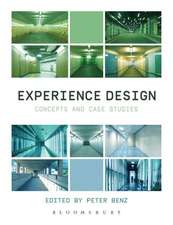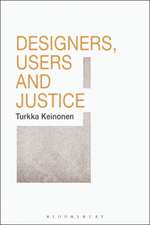Human – Computer Systems Interaction: Backgrounds and Applications 2: Part 2: Advances in Intelligent and Soft Computing, cartea 99
Editat de Zdzisław S. Hippe, Juliusz L. Kulikowski, Tteresa Mroczeken Limba Engleză Paperback – 15 oct 2011
| Toate formatele și edițiile | Preț | Express |
|---|---|---|
| Paperback (2) | 1282.00 lei 6-8 săpt. | |
| Springer Berlin, Heidelberg – 15 oct 2011 | 1282.00 lei 6-8 săpt. | |
| Springer Berlin, Heidelberg – 29 sep 2011 | 1286.94 lei 6-8 săpt. |
Din seria Advances in Intelligent and Soft Computing
- 18%
 Preț: 2813.03 lei
Preț: 2813.03 lei - 20%
 Preț: 1273.74 lei
Preț: 1273.74 lei - 18%
 Preț: 1214.72 lei
Preț: 1214.72 lei - 18%
 Preț: 1221.07 lei
Preț: 1221.07 lei - 20%
 Preț: 653.06 lei
Preț: 653.06 lei - 20%
 Preț: 1919.02 lei
Preț: 1919.02 lei - 20%
 Preț: 984.04 lei
Preț: 984.04 lei - 20%
 Preț: 1746.09 lei
Preț: 1746.09 lei - 20%
 Preț: 1906.99 lei
Preț: 1906.99 lei - 20%
 Preț: 1763.75 lei
Preț: 1763.75 lei - 20%
 Preț: 1278.68 lei
Preț: 1278.68 lei - 20%
 Preț: 1926.61 lei
Preț: 1926.61 lei - 20%
 Preț: 3183.20 lei
Preț: 3183.20 lei - 20%
 Preț: 334.86 lei
Preț: 334.86 lei - 20%
 Preț: 1916.55 lei
Preț: 1916.55 lei - 20%
 Preț: 981.25 lei
Preț: 981.25 lei - 20%
 Preț: 1934.70 lei
Preț: 1934.70 lei - 20%
 Preț: 1932.07 lei
Preț: 1932.07 lei - 20%
 Preț: 979.71 lei
Preț: 979.71 lei - 20%
 Preț: 1920.84 lei
Preț: 1920.84 lei - 15%
 Preț: 647.92 lei
Preț: 647.92 lei - 20%
 Preț: 985.86 lei
Preț: 985.86 lei - 20%
 Preț: 641.16 lei
Preț: 641.16 lei - 20%
 Preț: 3174.14 lei
Preț: 3174.14 lei - 20%
 Preț: 1293.71 lei
Preț: 1293.71 lei - 20%
 Preț: 2890.01 lei
Preț: 2890.01 lei - 20%
 Preț: 1924.15 lei
Preț: 1924.15 lei - 20%
 Preț: 1901.71 lei
Preț: 1901.71 lei - 20%
 Preț: 1934.70 lei
Preț: 1934.70 lei - 20%
 Preț: 1918.04 lei
Preț: 1918.04 lei - 20%
 Preț: 1919.02 lei
Preț: 1919.02 lei - 20%
 Preț: 419.25 lei
Preț: 419.25 lei - 20%
 Preț: 1310.68 lei
Preț: 1310.68 lei - 20%
 Preț: 1931.42 lei
Preț: 1931.42 lei - 20%
 Preț: 1941.96 lei
Preț: 1941.96 lei - 20%
 Preț: 2217.66 lei
Preț: 2217.66 lei - 20%
 Preț: 1297.17 lei
Preț: 1297.17 lei - 20%
 Preț: 1295.71 lei
Preț: 1295.71 lei - 20%
 Preț: 1306.07 lei
Preț: 1306.07 lei - 20%
 Preț: 1277.06 lei
Preț: 1277.06 lei - 20%
 Preț: 1909.64 lei
Preț: 1909.64 lei - 20%
 Preț: 668.07 lei
Preț: 668.07 lei
Preț: 1282.00 lei
Preț vechi: 1602.50 lei
-20% Nou
Puncte Express: 1923
Preț estimativ în valută:
245.39€ • 266.64$ • 206.26£
245.39€ • 266.64$ • 206.26£
Carte tipărită la comandă
Livrare economică 22 aprilie-06 mai
Preluare comenzi: 021 569.72.76
Specificații
ISBN-13: 9783642231711
ISBN-10: 3642231713
Pagini: 516
Ilustrații: XII, 504 p. 265 illus., 114 illus. in color.
Dimensiuni: 155 x 235 x 23 mm
Greutate: 0.7 kg
Ediția:2012
Editura: Springer Berlin, Heidelberg
Colecția Springer
Seria Advances in Intelligent and Soft Computing
Locul publicării:Berlin, Heidelberg, Germany
ISBN-10: 3642231713
Pagini: 516
Ilustrații: XII, 504 p. 265 illus., 114 illus. in color.
Dimensiuni: 155 x 235 x 23 mm
Greutate: 0.7 kg
Ediția:2012
Editura: Springer Berlin, Heidelberg
Colecția Springer
Seria Advances in Intelligent and Soft Computing
Locul publicării:Berlin, Heidelberg, Germany
Public țintă
ResearchCuprins
Part I Decision Supporting Systems.- Part II Distributed Knowledgebase’s and WEB Systems.- Part III Impaired Persons Aiding Systems.- Part IV Environment Monitoring and Robotic Systems.- Part V Diagnostic Systems.- Part VI Educational Systems.- Part VII General Problems.
Textul de pe ultima copertă
This volume of the book contains a collection of chapters selected from the papers which originally (in shortened form) have been presented at the 3rd International Conference on Human-Systems Interaction held in Rzeszow, Poland, in 2010. The chapters are divided into five sections concerning: IV. Environment monitoring and robotic systems, V. Diagnostic systems, VI. Educational Systems, and VII. General Problems. The novel concepts and realizations of humanoid robots, talking robots and orthopedic surgical robots, as well as those of direct brain-computer interface are examples of particularly interesting topics presented in Sec. VI. In Sec. V the problems of skin cancer recognition, colonoscopy diagnosis, and brain strokes diagnosis as well as more general problems of ontology design for medical diagnostic knowledge are presented. Example of an industrial diagnostic system and a concept of new algorithm for edges detection in computer-analyzed images are also presented in this Section. Among the educational systems, in Sec. VII the remote teaching and testing methods in higher education, a neurophysiological approach to aiding the learning process, an entrepreneurship education system and a magnetic levitation laboratory systems are presented. Sec. VII contains papers devoted to selected general human-computer systems interaction problems. Among them the problems of rules formulation for automatic reasoning, creation of ontologies, Boolean recommenders in decision systems and languages for proteins structural similarity description can be mentioned. The chapters included into both, I and II volumes of the book illustrate a large variety of problems arising and methods used in the rapidly developing Human-System Interaction research domain.
Caracteristici
Latest research on Human – Computer Systems Interaction Various examples of the Human- System Intraction problems and solution methods are presented Written by a leading expert in the field
























